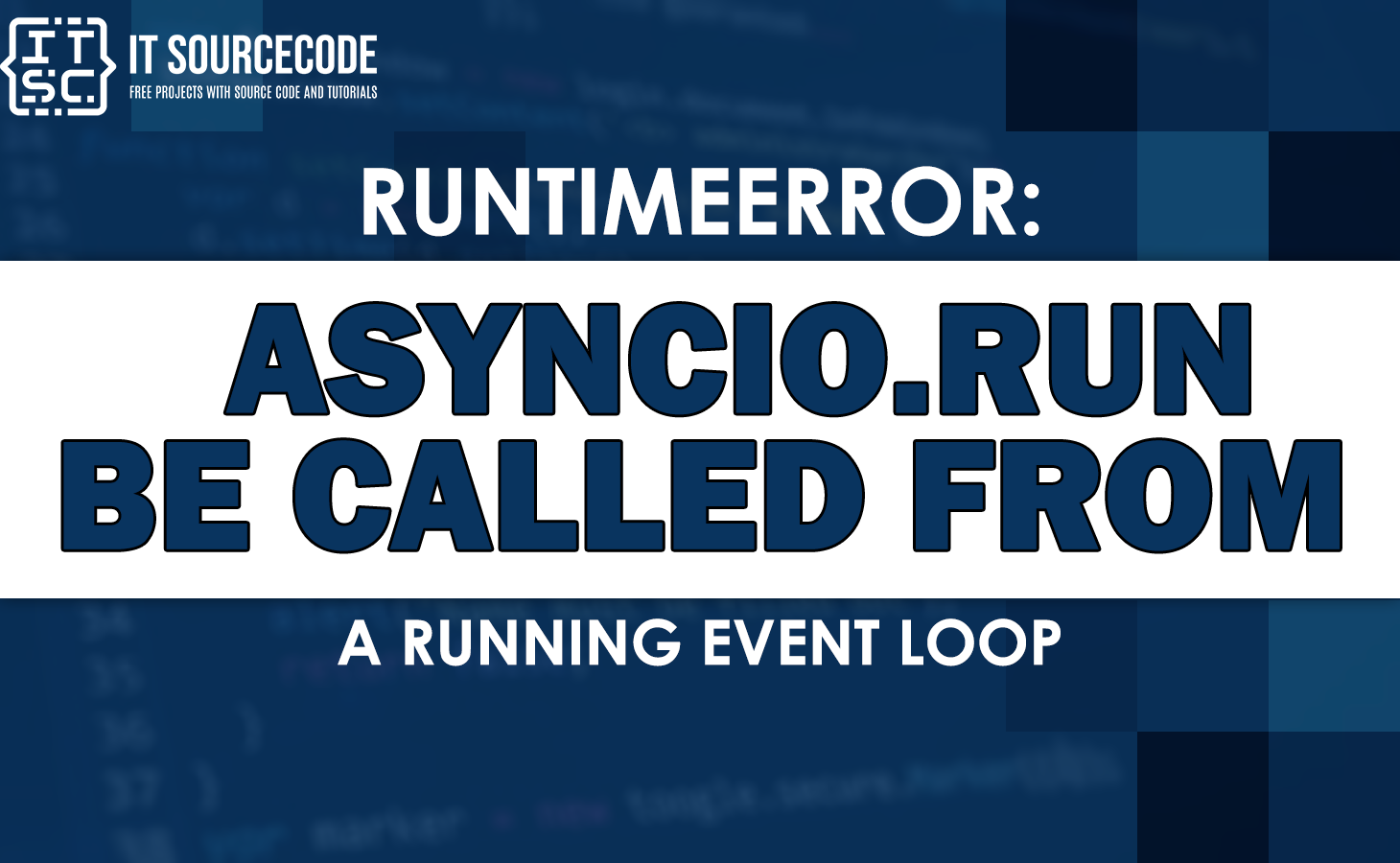If you are working with asyncio, you may have encountered an error message that says runtimeerror: asyncio.run cannot be called from a running event loop.
The error message occurs when you attempt to call the asyncio.run() function from within an already running event loop.
This article will discuss the causes, the possible solutions to solve the error and will answer some FAQs.
What Causes the Error?
The RuntimeError asyncio.run cannot be called from a running event loop error occurs when you attempt to call the asyncio.run function from within an existing running event loop.
In other words, you are attempting to create a new event loop while it is already running an event loop. It will disrupt the restrictions imposed by asyncio and result in a runtime error.
How to Fix this Error?
The following solutions to resolve the asyncio.run cannot be called from a running event loop error.
Solution 1: Isolate the asyncio.run Function
One method to resolve the error is to isolate the asyncio.run function in a separate module or script.
By moving the asyncio.run function call outside of any existing event loops, you will make sure that it is only executed once.
Here’s an example on how you can isolate the asyncio.run function:
import asyncio
async def main():
# Your asynchronous code here
if __name__ == "__main__":
asyncio.run(main())
By displacing the asyncio.run call inside the if __name__ == “__main__” block, you will make sure that it is only executed when the module is run directly, not when it is imported.
Solution 2: Utilize asyncio.get_event_loop
Another solution is to use the asyncio.get_event_loop function to retrieve the current event loop and run your coroutine within it.
This is to make sure that you are not creating a new event loop when the other one is already active.
Here’s an example of how to use asyncio.get_event_loop:
import asyncio
async def main():
# Your asynchronous code here
if __name__ == "__main__":
loop = asyncio.get_event_loop()
loop.run_until_complete(main())
By obtaining the event loop and running the coroutine using the run_until_complete method, you can avoid the error.
Solution 3: Using asyncio.ensure_future Instead of asyncio.run
If you are using asyncio.run to execute a single coroutine, the alternative way is to use the asyncio.ensure_future function.
This function will schedules a coroutine to run in the event loop without creating a new event loop.
This can help to avoid the “asyncio run cannot be called from a running event loop” error.
Here’s an example of how to use asyncio.ensure_future:
import asyncio
async def main():
# Your asynchronous code here
if __name__ == "__main__":
loop = asyncio.get_event_loop()
task = asyncio.ensure_future(main())
loop.run_until_complete(task)
By using asyncio.ensure_future, you schedule the coroutine to run within the existing event loop, eliminating the need for asyncio.run and preventing the error.
Solution 4: Restart the Event Loop
In some cases, restarting the event loop can resolve the “asyncio.run cannot be called from a running event loop” error.
You can achieved this through easily closing the current event loop and creating a new one before calling asyncio.run.
Here’s an example on how to restart the event loop:
import asyncio
async def main():
# Your asynchronous code here
if __name__ == "__main__":
loop = asyncio.get_event_loop()
loop.close()
asyncio.run(main())
By closing the existing event loop using loop.close() and then calling asyncio.run, you initiate a fresh event loop and prevent any conflicts that may cause the error.
Solution 5: Check for Nested Event Loops
Nested event loops can also be a possible cause of the error. It is necessary to make sure that your code does not recklessly create nested event loops.
Solution 6: Review Your Code Structure
The error can sometimes appear due to structural issues in your code. Review your code to make sure that it follows the recommended guidelines and best practices for working with asyncio.
Make sure that your code is organized and modularized, separating different sections of functionality into spefic coroutines.
This helps maintain simplicity and reduces the chances of encountering errors related to event loop conflicts.
Additional Resources
- attempting to capture an eagertensor without building a function.
- Runtimeerror: the poetry configuration is invalid:
- Runtimeerror cuda out of memory stable diffusion
- Runtimeerror: address already in use
Conclusion
In conclusion, encountering the “RuntimeError: asyncio.run cannot be called from a running event loop” error can be frustrating, but with the solutions provided in this article, you should be able to resolve the issue.
Remember to isolate the asyncio.run function, utilize asyncio.get_event_loop or asyncio.ensure_future when appropriate, restart the event loop if needed, and review your code structure to avoid nested event loops.
Frequently Asked Questions (FAQs)
Asyncio is a library in Python that provides a framework for writing single-threaded concurrent code using coroutines, multiplexing I/O access over sockets, and other resources.
An event loop in asyncio is responsible for executing coroutines and scheduling callbacks. It waits for coroutines to complete and handles IO operations efficiently without blocking other tasks.
This error occurs because you attempt to call the asyncio.run function from within an existing running event loop, which is not allowed.

